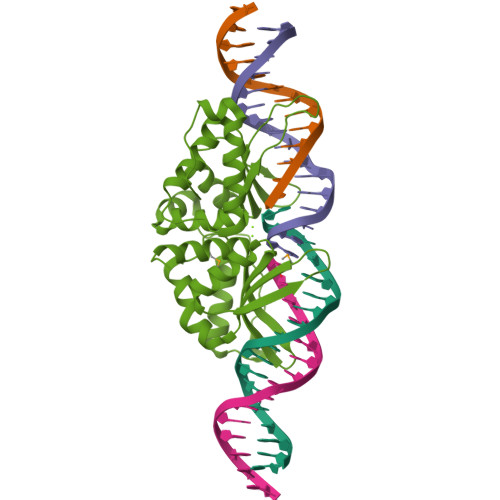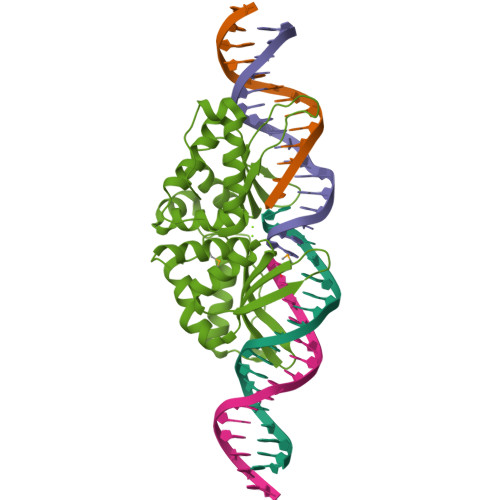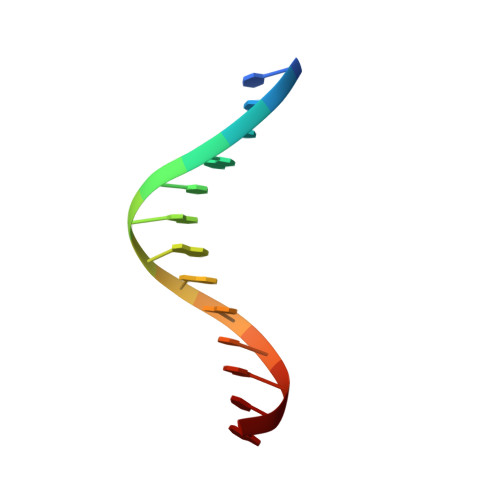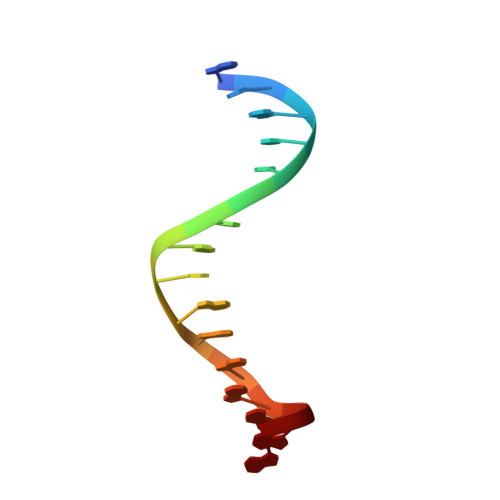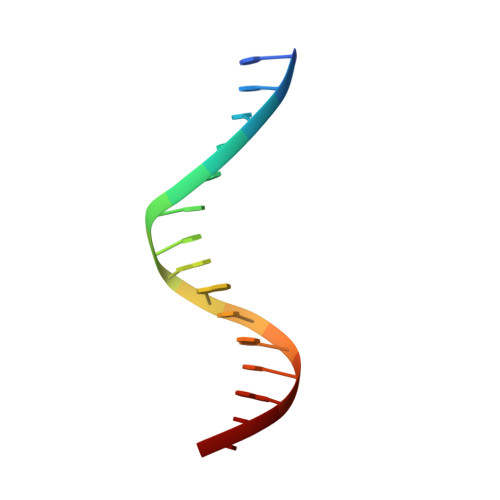Structural and biochemical analyses of DNA and RNA binding by a bifunctional homing endonuclease and group I intron splicing factor.
Bolduc, J.M., Spiegel, P.C., Chatterjee, P., Brady, K.L., Downing, M.E., Caprara, M.G., Waring, R.B., Stoddard, B.L.(2003) Genes Dev 17: 2875-2888
- PubMed: 14633971
- DOI: https://doi.org/10.1101/gad.1109003
- Primary Citation of Related Structures:
1P8K - PubMed Abstract:
We determined the crystal structure of a bifunctional group I intron splicing factor and homing endonuclease, termed the I-AniI maturase, in complex with its DNA target at 2.6 A resolution. The structure demonstrates the remarkable structural conservation of the beta-sheet DNA-binding motif between highly divergent enzyme subfamilies. DNA recognition by I-AniI was further studied using nucleoside deletion and DMS modification interference analyses. Correlation of these results with the crystal structure provides information on the relative importance of individual nucleotide contacts for DNA recognition. Alignment and modeling of two homologous maturases reveals conserved basic surface residues, distant from the DNA-binding surface, that might be involved in RNA binding. A point mutation that introduces a single negative charge in this region uncouples the maturase and endonuclease functions of the protein, inhibiting RNA binding and splicing while maintaining DNA binding and cleavage.
Organizational Affiliation:
Fred Hutchinson Cancer Research Center, Division of Basic Sciences, Seattle, Washington 98109, USA.








